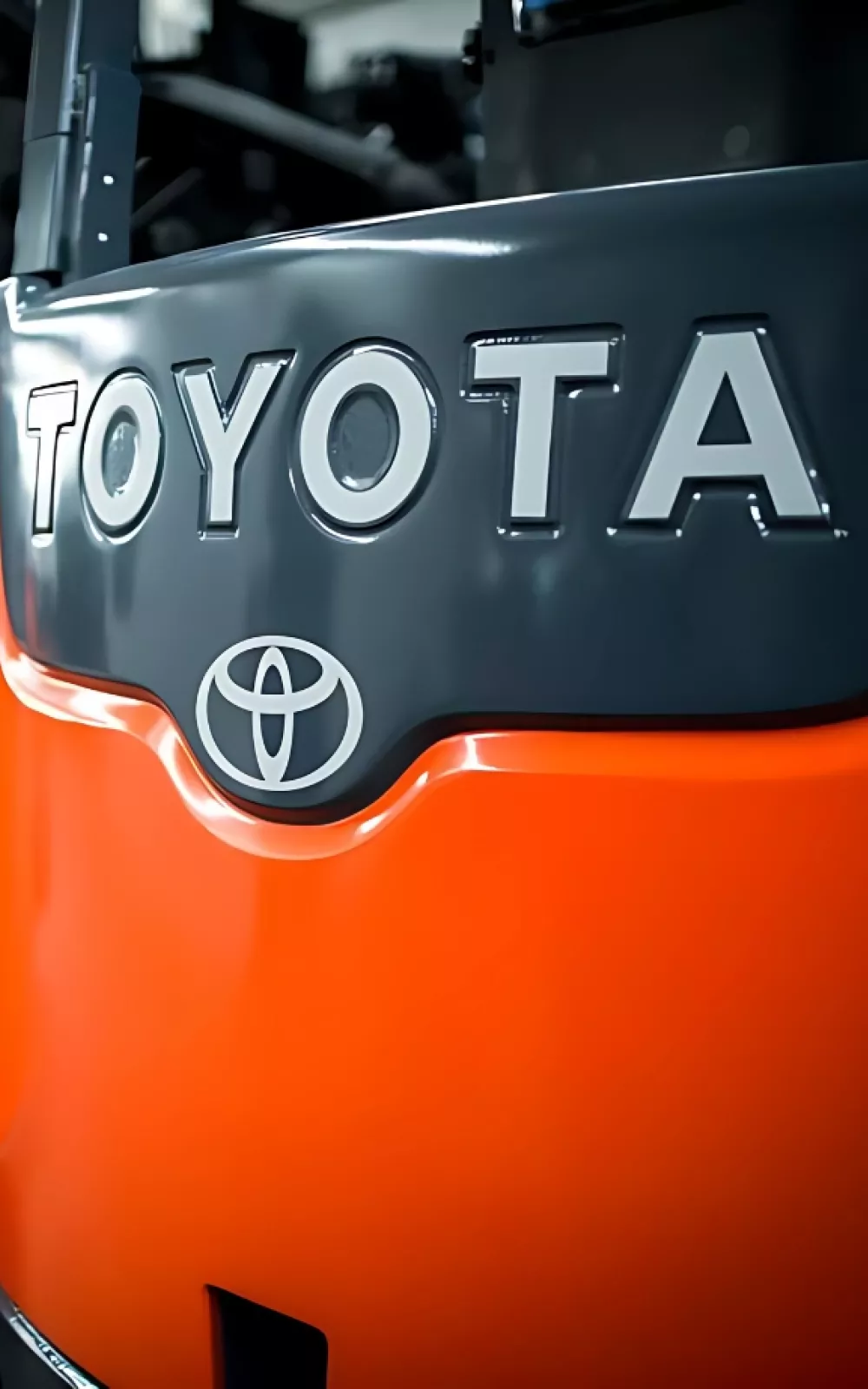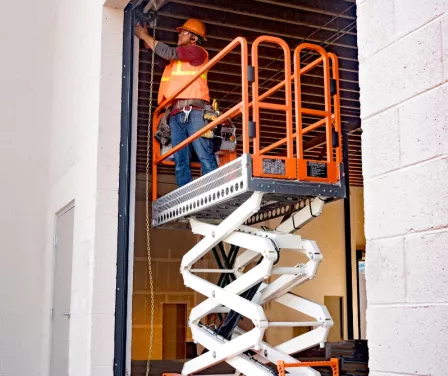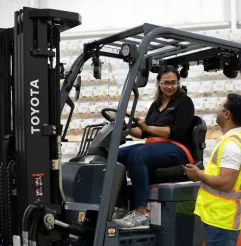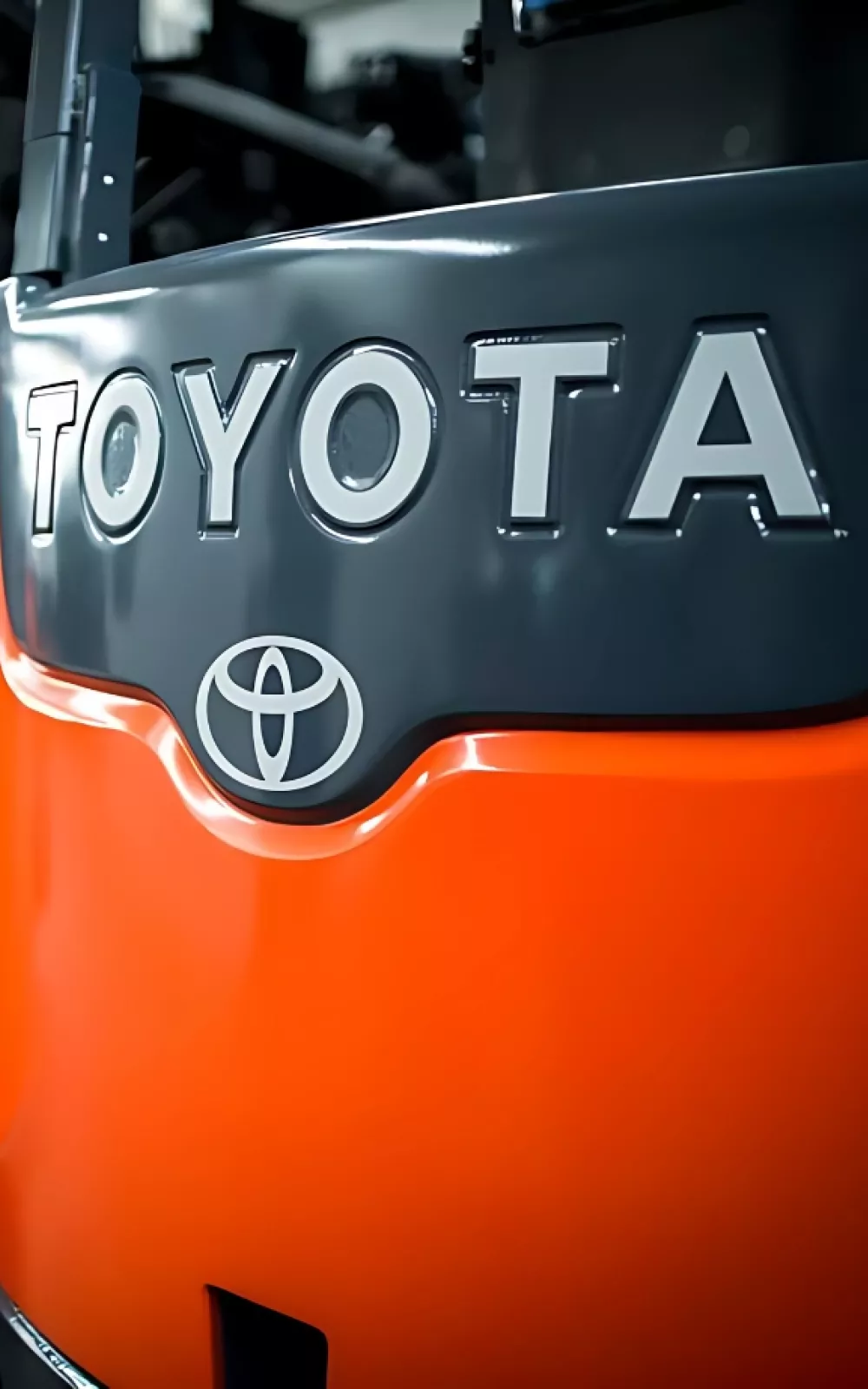Rent
ProLift offers daily, weekly, and monthly rentals. Find the right equipment for maximum productivity and safety.
Let us know how we can assist you! A ProLift specialist will connect with you to help with your material handling needs.

Understanding the specific safety requirements for different types of lifts is crucial to protecting workers from fall hazards. Learn when a body harness is necessary, why it's important, and how to ensure proper use for maximum safety while operating aerial lifts.

The risk of an operator being catapulted is the true deciding factor. It sounds extreme but when an operator drives a boom lift over rough terrain, even in a lowered position, an operator can be ejected up and outside the confines of the platform handrails. The same catapult effect can occur if the boom is extended, which creates a “diving board” action.
On boom supported equipment a body harness and lanyard are required by OSHA to ensure the operator’s feet can travel no higher than the top rail of the platform during a catapult action. This also requires proper lanyard length. If an operator is wearing a lanyard with too much length or attaches their lanyard in the wrong place on the platform, the risk remains for the operator’s feet to travel higher than the top rail.
Because scissor lifts offer very little risk of catapult, neither OSHA nor ANSI requires body harness and lanyard use. The points of support are directly beneath the operator’s platform, negating the need for a harness and the equipment’s handrails serve as the fall protection.
Companies may need to establish site-specific safety rules, which OSHA acknowledges and supports. However, requiring the use of a body harness and lanyard in all situations can sometimes introduce risks. It's essential to educate operators on the differences between fall restraint and fall protection to ensure they use the appropriate safety measures for each application.

Continue promoting safety at your facility with our comprehensive safety training classes. ProLift offers training for both operators and trainers. Contact our safety specialist to schedule your team.
Fall protection requirements for handrail systems require a minimum height of 42”, plus or minus 3”. If an operator steps up on the rails or toe boards the operator will not have proper handrail height for their body.
Unfortunately, many Health, Safety & Environment (HSE) professionals are not aware of this guideline and allow maintenance crews to climb on handrails as long as they wear body harnesses and lanyards.
Wearing a body harness and lanyard on aerial lifts doesn't automatically meet fall protection standards. For compliance, the lanyard must be attached to an anchor point capable of withstanding a 5,000 lb static load. To reduce the number of fatalities, educating aerial lift operators on the dangers of improper climbing and safety practices is essential.
ProLift’s Training Team is here to support you with answers related to federal regulations and aerial lift trucks. Contact our safety specialist or learn more about safety training classes offered.
As a full-service material handling dealer, ProLift can help you with questions and solutions for your equipment, service, parts and more. Tell us how we can help.

Let us know how we can assist you! A ProLift specialist will connect with you to help with your material handling needs.
